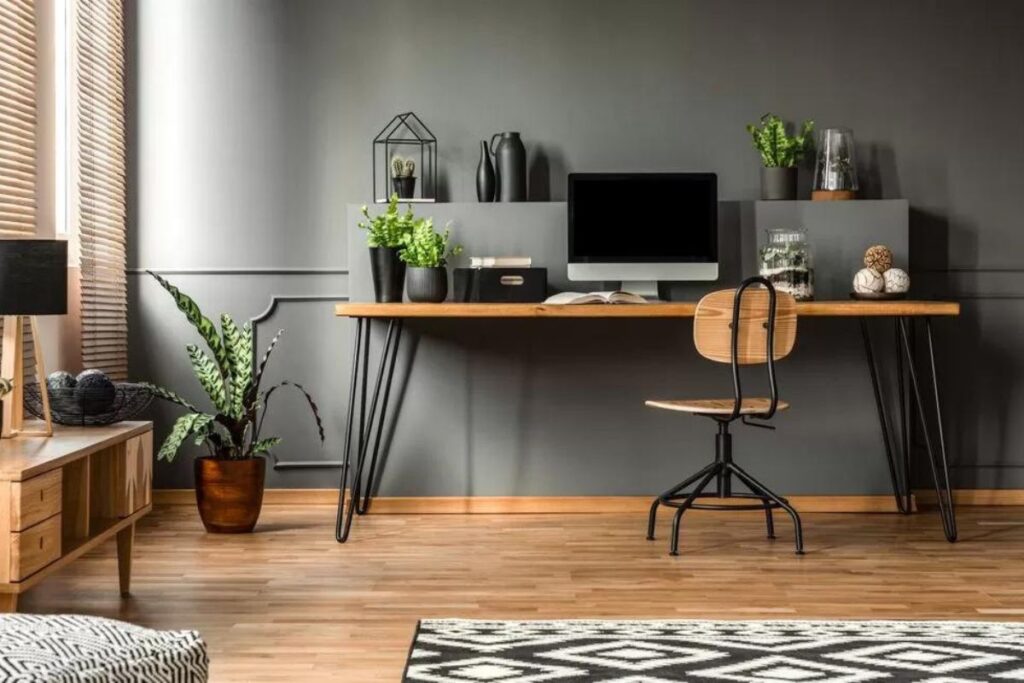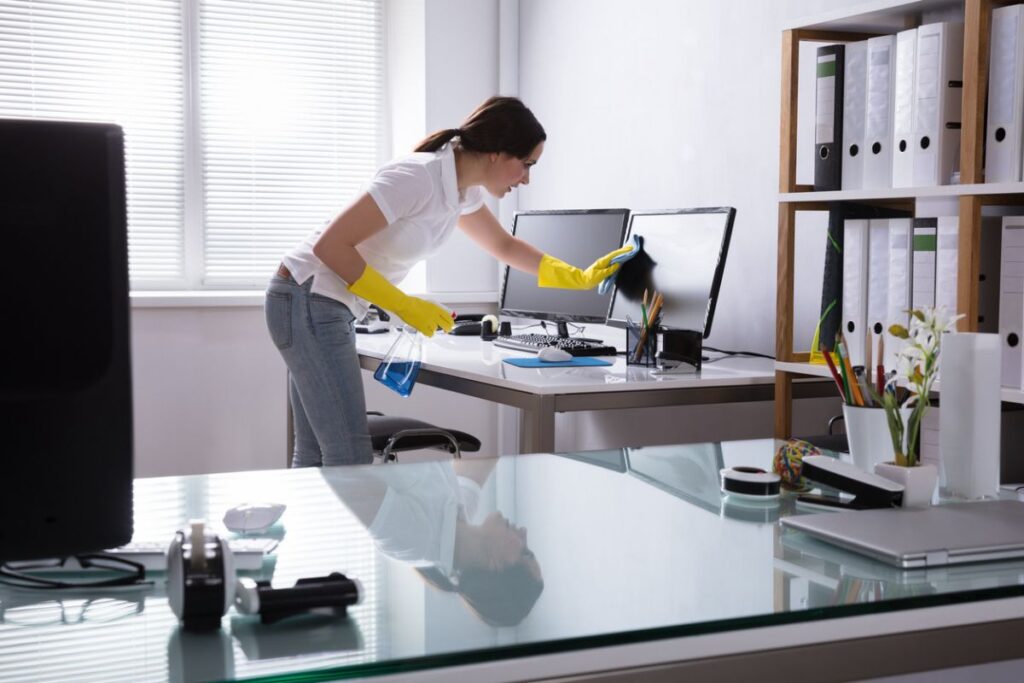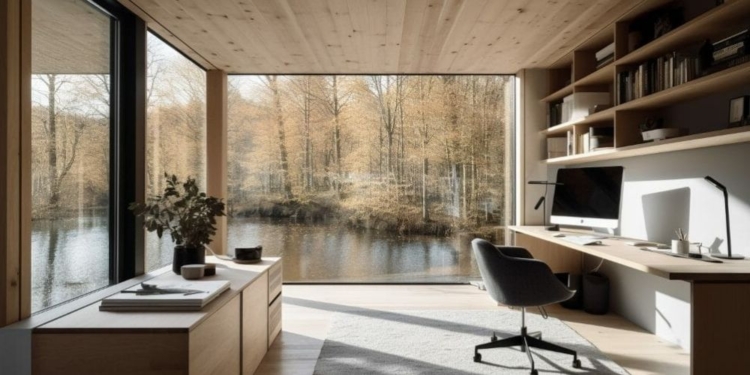Working from home has become increasingly common, and having a well-designed home office is essential for productivity, comfort, and overall well-being. Whether you’re a freelancer, remote worker, or entrepreneur, setting up a home office that suits your needs is paramount to success. In this guide, we’ll explore the steps to creating a functional and inspiring workspace right in the comfort of your own home.
Choosing the Right Location

The first step in setting up your home office is selecting the perfect location. Consider a space that offers privacy, natural light, and minimal distractions. Assess the available space in your home and choose a room or area that can be dedicated solely to work. Ideally, opt for a room with windows to allow for plenty of natural light and fresh air.
Selecting Essential Furniture

Investing in quality furniture is crucial for creating a comfortable and productive home office. Start with an ergonomic chair and desk that provide proper support and promote good posture. Additionally, consider storage solutions such as shelves, filing cabinets, or drawers to keep your workspace organized and clutter-free.
Setting Up Proper Lighting

Proper lighting is essential for reducing eye strain and creating a welcoming atmosphere in your home office. Choose a combination of natural and artificial lighting to illuminate your workspace effectively. Position your desk near a window to maximize natural light during the day, and supplement with task lighting, such as a desk lamp or overhead lights, for adequate illumination in the evenings.
Organizing Your Equipment and Supplies
Keep your equipment and supplies organized and within reach to streamline your workflow. Arrange your computer, printer, and other devices on your desk in a way that promotes efficiency and accessibility. Utilize storage solutions such as file organizers, trays, and bins to keep paperwork and office supplies neatly stored and easily accessible.
Creating a Productive Environment

Eliminate distractions and create a productive work environment by minimizing clutter and incorporating personal touches. Remove any unnecessary items from your workspace and add elements that inspire and motivate you, such as plants, artwork, or meaningful decor.
Personalize your space to reflect your style and personality while maintaining a professional atmosphere.
Importance of ergonomic setup
Ergonomics plays a vital role in maintaining your health and productivity. Invest in an ergonomic chair that supports your spine and promotes good posture. Additionally, consider an adjustable desk that allows you to alternate between sitting and standing positions.
Tips for maintaining good posture
Practice proper ergonomics by keeping your monitor at eye level, maintaining a neutral spine, and positioning your keyboard and mouse within easy reach. Take regular breaks to stretch and avoid prolonged sitting, which can lead to discomfort and musculoskeletal issues.
Establishing a Daily Routine

Establish a consistent schedule to maintain a healthy work-life balance. Set specific work hours and stick to them to avoid overworking or procrastination. Having a routine helps you stay focused and organized throughout the day.
Taking breaks and staying organized
Schedule regular breaks to rest your eyes and stretch your muscles. Use tools like time-blocking or to-do lists to prioritize tasks and stay on track with deadlines. A well-organized workspace reduces distractions and enhances productivity.
Managing Technology and Connectivity

A stable internet connection is essential for seamless communication and productivity. Invest in reliable internet service providers and consider backup options like mobile hotspots or alternative networks to prevent disruptions in your workflow.
Backup systems and cybersecurity measures
Protect your data and information by implementing robust cybersecurity measures. Use encrypted communication tools and antivirus software to safeguard against cyber threats. Regularly backup your files to prevent data loss due to unforeseen circumstances.
Adding plants and artwork

Incorporate elements of nature into your workspace with indoor plants. Plants not only improve air quality but also enhance mood and productivity. Personalize your space with artwork or decor that inspires and motivates you.
Choosing colors conducive to productivity
Select colors that promote focus and creativity. Shades of blue and green have a calming effect, while pops of yellow or orange can boost energy and creativity. Experiment with different color schemes to find what works best for you.
Maintaining Cleanliness and Organization

Keep your workspace tidy and clutter-free to minimize distractions and improve concentration. Set aside time each week for decluttering and cleaning to maintain a conducive work environment.
Utilize organizational tools such as file cabinets, shelves, or digital apps to keep your documents and supplies organized. Create designated zones for different tasks to streamline workflow and increase efficiency.
Prioritizing Health and Wellness
Incorporating movement and exercise breaks
Combat the sedentary nature of desk work by incorporating movement into your daily routine. Take short breaks to stretch, walk, or do quick exercises to improve circulation and reduce fatigue.
Conclusion
Setting up a home office is more than just placing a desk and chair in a room. It’s about creating a conducive environment that promotes productivity, comfort, and well-being. By prioritizing ergonomics, establishing a daily routine, managing technology, and incorporating personal touches, you can design a space that inspires creativity and enhances efficiency.
FAQs
How can I maximize space in a small home office?
Consider multifunctional furniture, such as a desk with built-in storage or wall-mounted shelves, to optimize space efficiently.
What are some ergonomic tips for setting up my home office?
Ensure your chair and desk are at the correct height to promote good posture, and position your monitor at eye level to reduce neck strain.
How can I maintain a healthy work-life balance while working from home?
Set clear boundaries between work and personal time, establish a routine, and take regular breaks to recharge and relax.
What are some ways to stay organized in my home office?
Use digital tools like calendars and task managers, declutter regularly, and designate specific areas for different tasks to maintain organization.
How can I improve my productivity in a home office environment?
Create a designated workspace, minimize distractions, set realistic goals, and prioritize tasks to enhance productivity and focus.







